A credit note is a document sent by the merchant to the customer, notifying that a credit has been provided to their account. A credit note can be issued for the following reasons:
A Credit Note in Chargebee will also be created when you:
Chargebee offers 3 types of credits - Adjustment, Refundable, and Promotional. Of the three, a Credit Note will be created only when you are offering adjustment or refundable credits.
An Adjustment Credit Note could be used to adjust the amount of an already existing invoice that is in Payment Due or Not Paid state. This type of Credit Note can be created when the price of an invoice has to be reduced as a discount to the customer.
An Adjustment Credit Note is automatically created when
Adjustment Credits appear as "Adjustments" in the invoice.
A Refundable Credit Note can be created if you would like to repay a certain amount to the customer. This can be retained as credits which are then automatically applied to upcoming invoices. You can also choose to apply them on existing unpaid invoices, or refund the amount.
In Chargebee, Refundable Credits are automatically created when:
Refundable Credits appear as "Credits" in the invoice.
These credits are provided to the customer for promoting the product. You can use Promotional Credits to offer referral bonuses, cash back offers, etc. When a customer has promotional credits, it is automatically applied whenever a new invoice is created. These credits are not stored as a Credit Note in Chargebee. You can view them at a customer level.
You can create a refundable credit note by clicking the ‘Create a Credit Note' option in the Invoice.
The type of Credit Note that can be created depends on the invoice status.
If the invoice is in Payment Due state, then you will be able to only create a Credit Note to adjust the due amount.
If the invoice is in the Paid state,then you will be able to only create a Credit Note to provide refundable credits.
If the invoice is partially paid, you can choose to either adjust the due amount for the unpaid amount or provide credits against the paid amount.
Checkout the visuals below to see how this is done.
Refundable Credit Note:
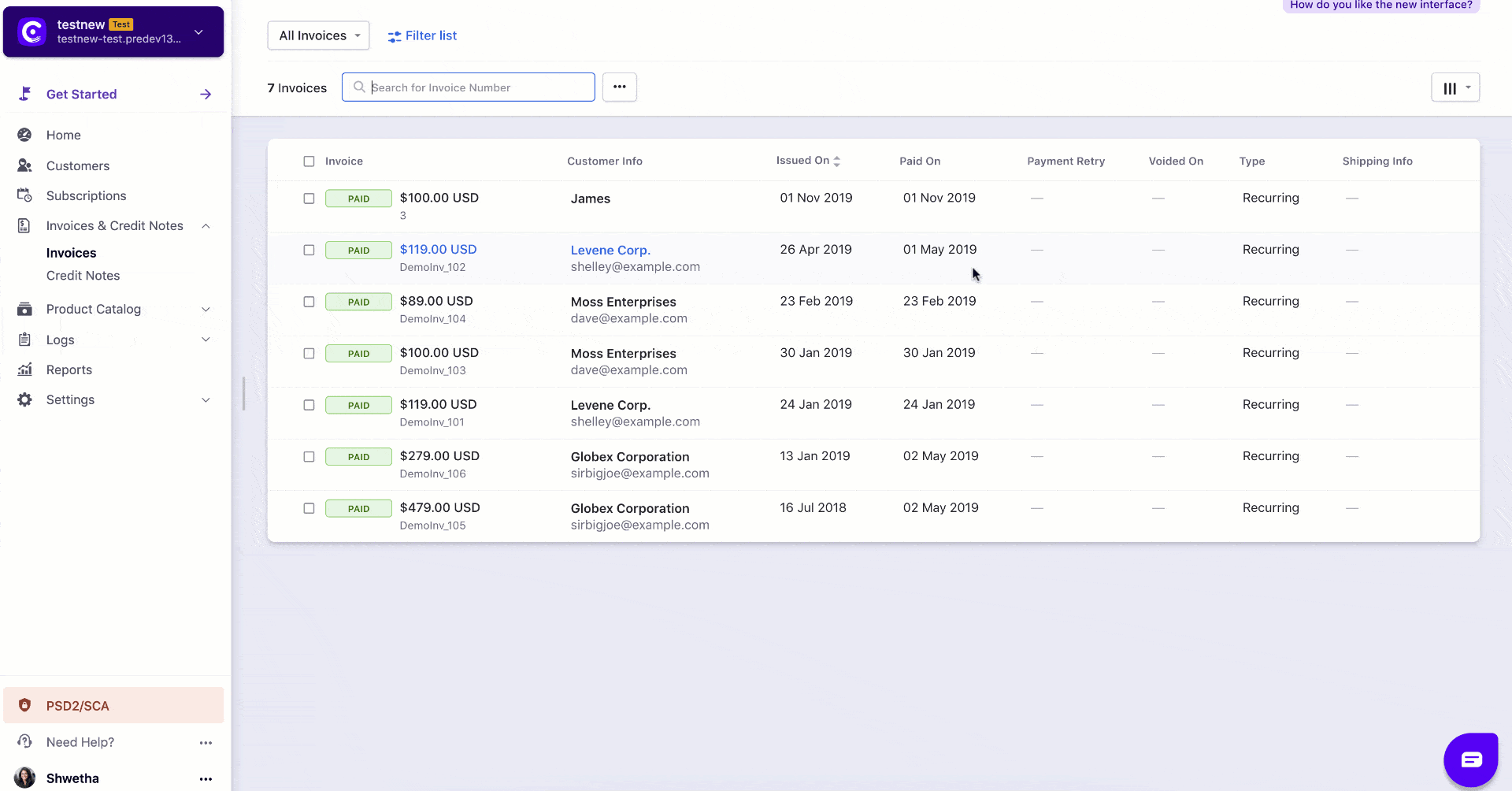
The credit note created will look as shown below:
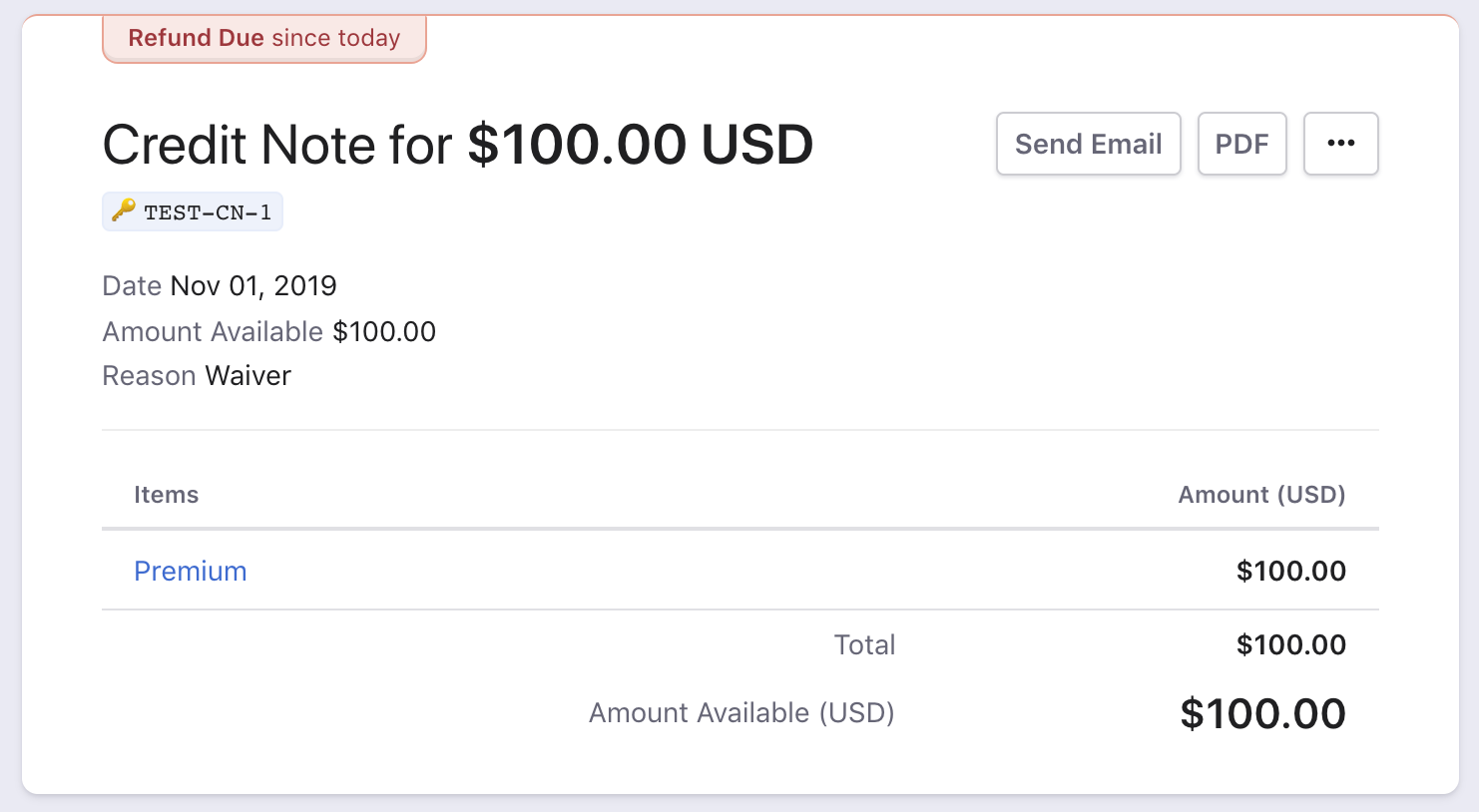
Adjustable Credit Note:
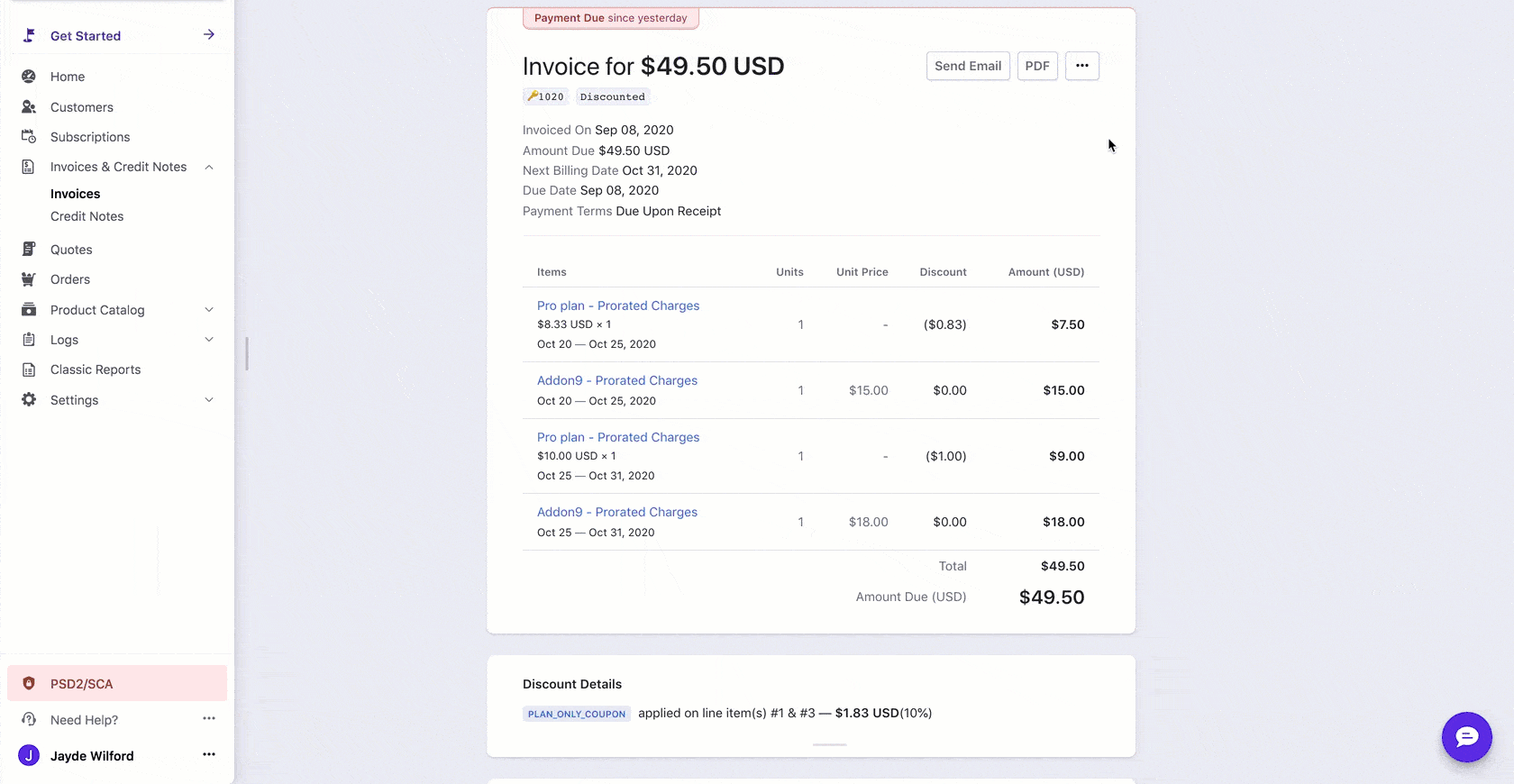
The reason that you select while creating the Credit Note will be displayed in the Credit Note. Any Credit Note in Chargebee will have one of the following status:
You can also choose to customize your Credit Notes to suit your requirements (such as numbering, adding a note etc). To customize your Credit Notes, go to Settings > Configure Chargebee > Invoices & Credit Notes.
Fractional Correction:
When using the Create Credit Note operation, by default, the total invoice amount will be prorated against all the line items present in the invoice. Suppose that you edit the credit note amount and create multiple credit notes against a single invoice. The line items' amounts in such credit notes are arrived at by applying the same ratio as was in the original invoice. This can lead to a small surplus or deficit, which is captured as fractional correction. Keep in mind that this amount is not lost anywhere. It will be adjusted in the final credit note that you create for the respective invoice.
Chargebee allows you to create Credit Notes for individual line items if your Invoice has more than one line item. You can choose to create a credit note for the entire line amount or a part of it. The below visualisation shows how to create credit notes for one or more line items.
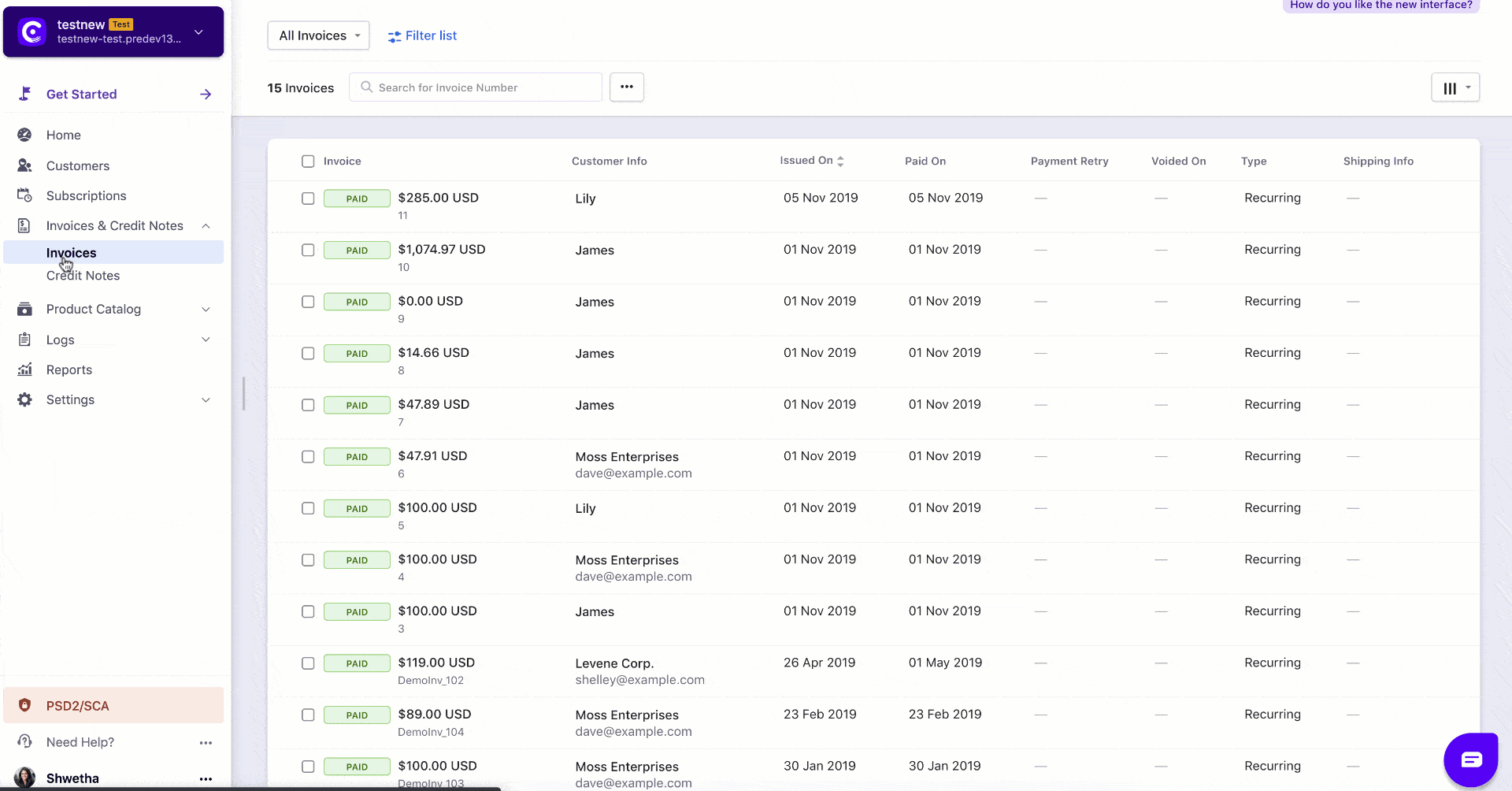
Proration and Credit Note Creation:
During a subscription change, Credit Notes created due to proration (Adjustment/Refundable) will be generated depending on the invoice status. Learn more.
Time Zone of Credit Notes:
Credit notes will be recorded in the time zone of the Chargebee site at the time of generation. However, if you change the time zone, the newly generated credit notes will follow the new time zone and the ones that were generated already will be recorded in the previous time zone. Say you had your Chargebee site set to follow PST till the 30th of April. On the 1st of May, you change the time zone of your Chargebee site to EST.
The credit notes generated till the 30th of April will be in PST and credit notes generated from the 1st of May will be in EST. For invoices that are impacted with the time zone alteration, a banner, with the details of the change, will be displayed on the Credit notes details page.
You can view all the Credit Notes that you have created by clicking Invoices and Credit Notes > Credit Notes.
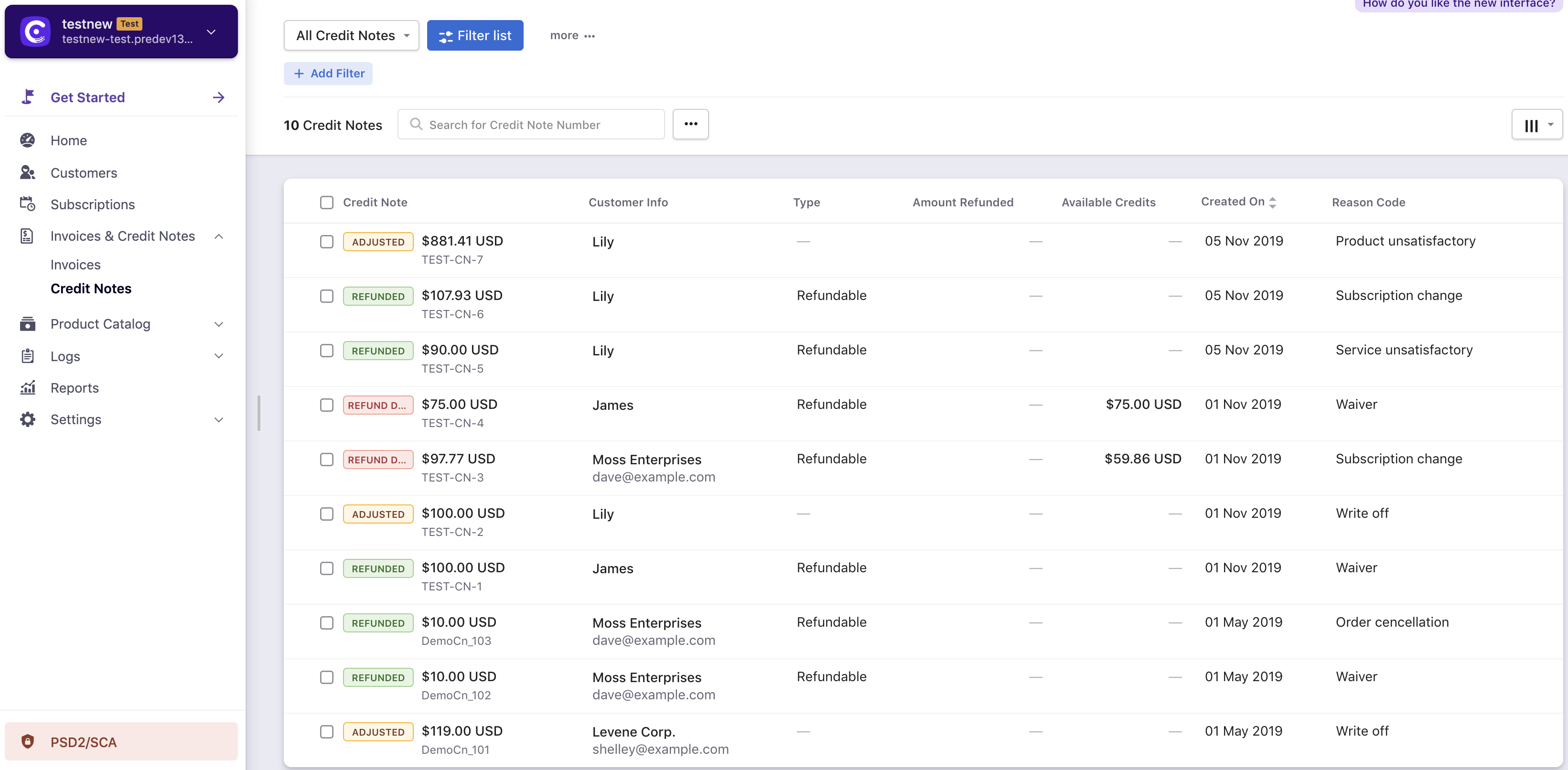
Any referral bonus, loyalty credits, rewards, cash back, etc. that you would like to provide your customer can be provided as promotional credits. These credits are added at a customer level which means they can be adjusted towards any invoice of the customer.
You can add or deduct Promotional Credits via the Chargebee user interface or API.
The below visualisation helps you add Promotional Credits via the Chargebee user interface.
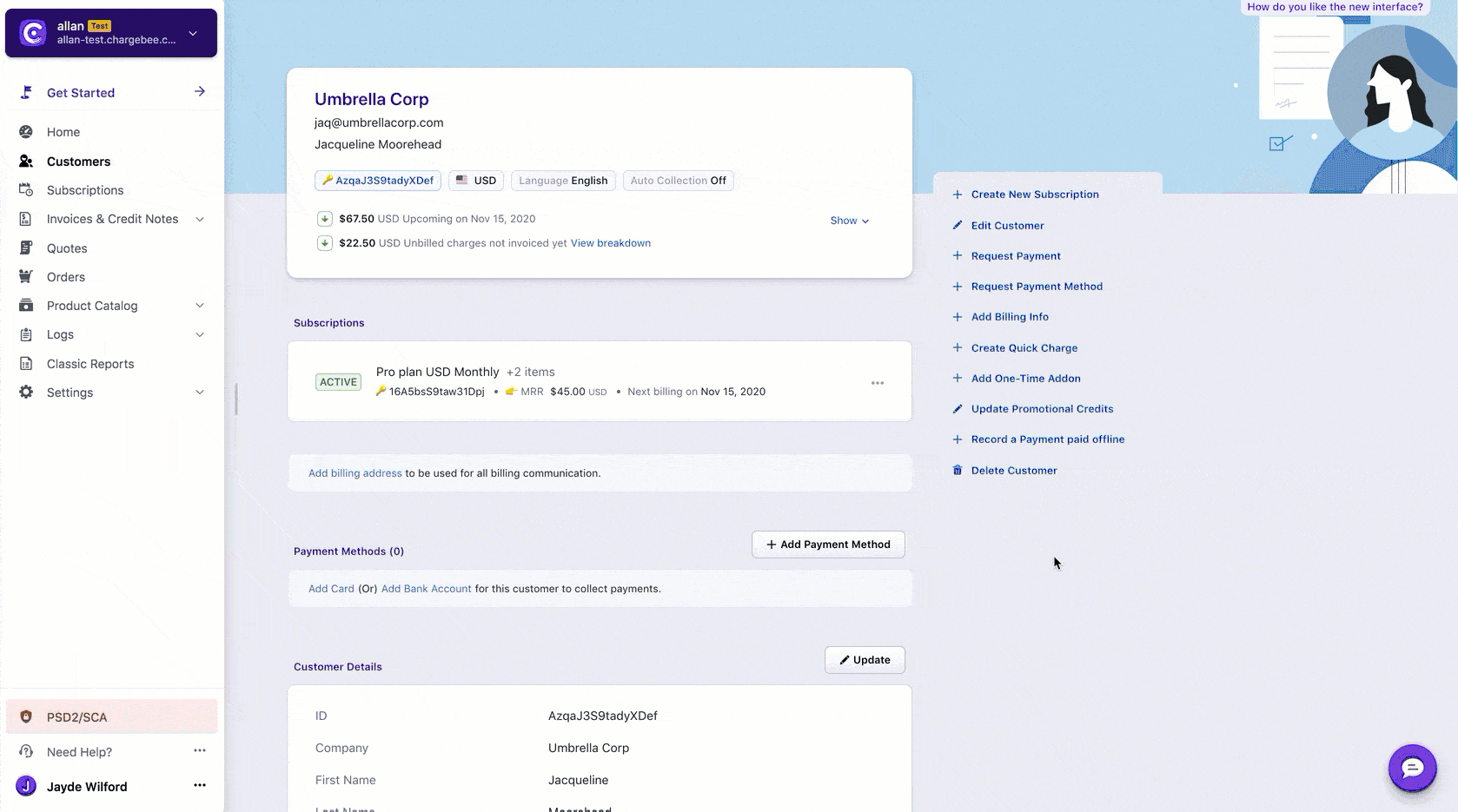
The credit balance will reflect in the summary section.
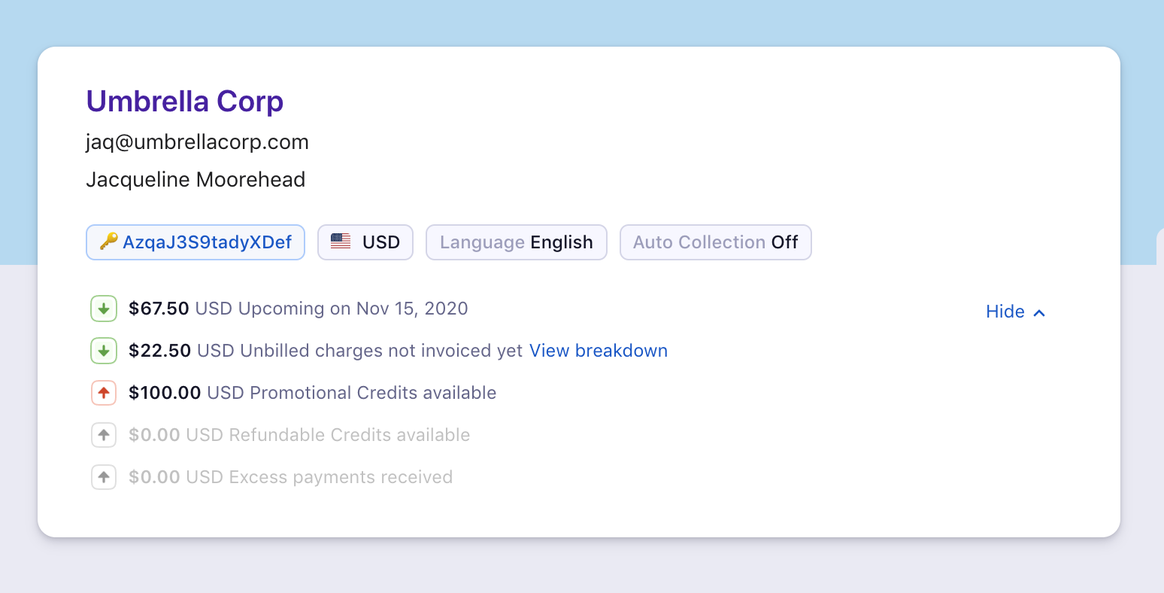
You can also view the transactions made using the promotional credits by clicking the Promotional Credits tab in the History section.
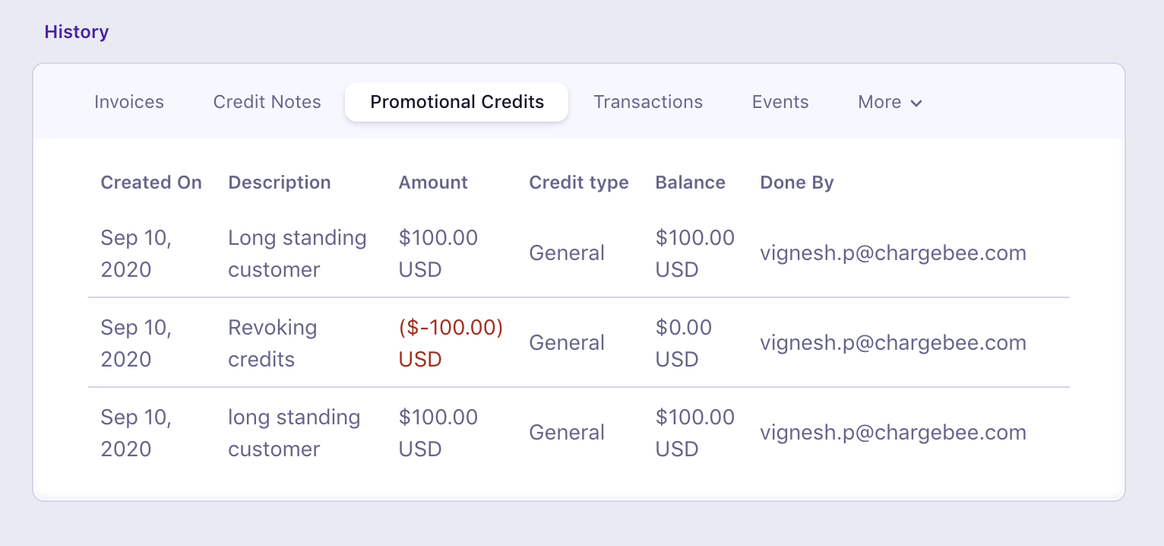
You can perform the following operations with respect to Promotional Credits using APIs:
Any invoice that is generated after the Credit Note has been created will be auto adjusted.
For old invoices in payment due status, the credits must be manually applied as shown below.
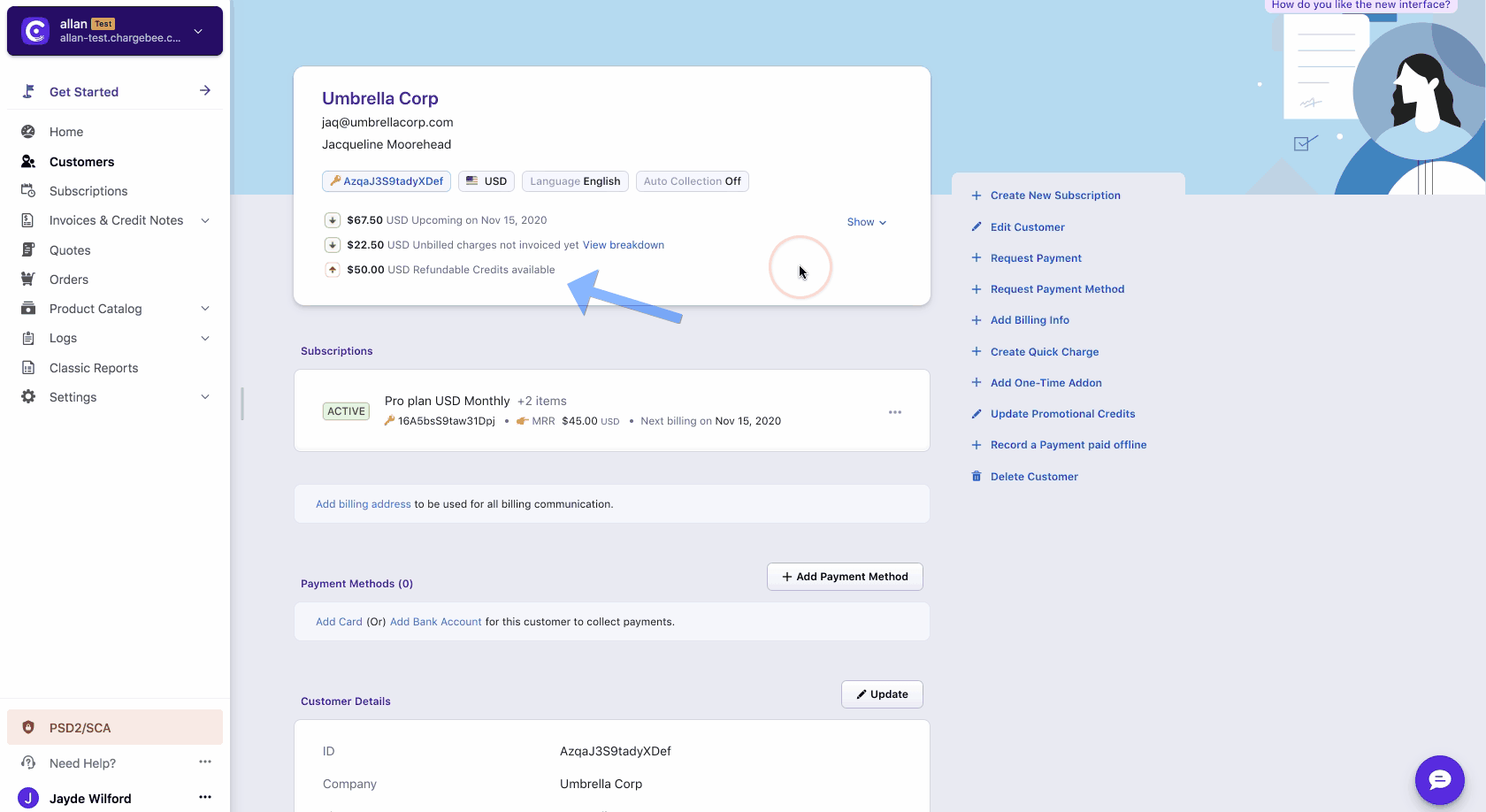
Alternatively, to apply the credits to existing invoices:
Open the Credit Note
Select Allocate Credits

Select the Payment Due Invoices and click Allocate.
You can remove the allocated credits from an Invoice. When you remove the allocated credits, the Invoice moves to a 'Not Paid' status and the Credit Note moves to a 'Refund Due' status.
From the Invoice:

From the Credit Note:

You can directly issue a refund using the Issue a Refund option in the Invoice. When you use this option a Credit Note will be created with the 'Refunded' status. The amount will be directly refunded to the original payment method.
In case you have created a Credit Note, and your customer wants a (partial or full) refund of the amount to their original payment method, then:
Open the Credit Note
Click Issue a refund
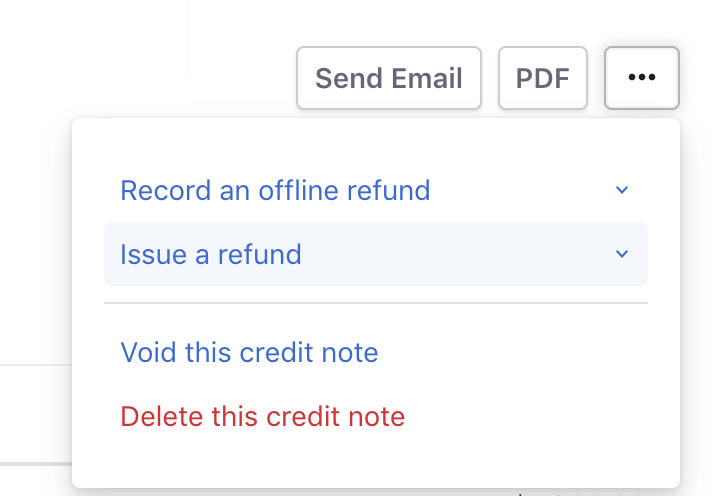
Enter the amount and click Refund
This option is applicable only if you have made the payment via card. For payments made via cash, check, bank transfer etc, please use the 'Record an Offline Refund' option and refund the amount manually.
The option to Void or Delete a Credit Note can be used to remove wrongly generated Credit Notes. If the Void option is used, the status is marked as Voided but the Credit Note will still be available in the system. However, if a Credit Note is deleted, it is removed from the system and the operation cannot be undone. It is good accounting practice to void an invoice instead of deleting one.
To void or delete the Credit Note, select the credit note from the Credit Notes page and click the Void/Delete Option.

You can download your Credit Notes as a PDF or a CSV using the export feature.
To stay compliant with the South African law, when billing is done on a different currency other than South African Rand, you can display the exchange rate on the credit note details page and the credit note pdf. Contact Chargebee Support if you want exchange rates to be displayed on your credit notes.

Credits raised in Chargebee are accounted for in reports non-retrospectively. When a new credit note is created for an invoice in the past, the past days' reporting is not altered. Instead, the credit note charge is calculated and recognized on the current day.